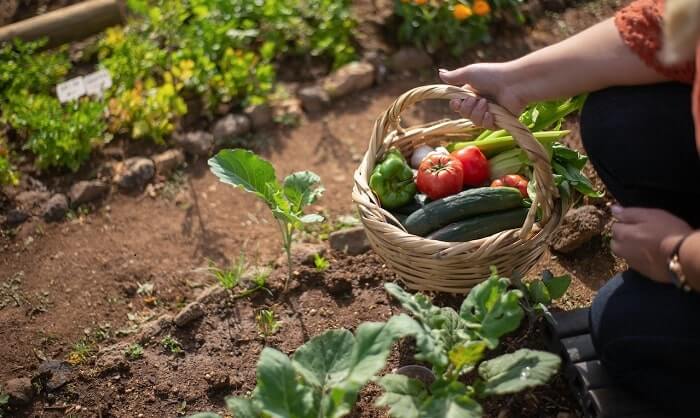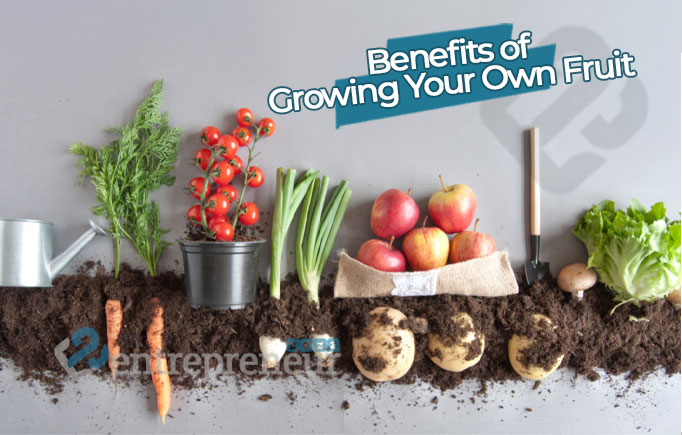Growing your own fruit garden in the UK has never been more popular or rewarding. It is an activity that not only enhances your garden but also provides countless health and environmental benefits. This guide has been written with valuable help from CRJ Fruit Trees and explores the advantages of cultivating your own fruit tree and offers guidance on how to establish a fruitful garden in the UK.
Benefits of Growing Your Own Fruit
1. Healthier and Tastier Produce
When you grow your own fruit, you have complete control over the cultivation process, allowing you to avoid pesticides and chemicals often used in commercial agriculture. Home-grown fruit is fresher and more flavourful, resulting in healthier and tastier produce.
2. Environmental Benefits
Cultivating fruit at home reduces the need for transporting produce over long distances, thus minimising the carbon footprint. Additionally, fruit gardens promote biodiversity and provide a habitat for beneficial insects and pollinators.
3. Mental Well-being
Gardening has been proven to alleviate stress, anxiety and even depression. Physical activity, fresh air, and the satisfaction of harvesting your own fruit contribute to improved mental well-being.
4. Cost-effectiveness
Growing your own fruit can be a cost-effective alternative to purchasing products from the supermarket. While initial investments are necessary, the long-term savings can be significant.

5. Educational Opportunities
A fruit garden offers a hands-on learning experience for children and adults alike, teaching valuable lessons about nature, the environment, and the origins of food.
Getting Started: Choosing the Right Fruit for Your Garden
When selecting fruit for your garden, consider the following factors:
1. Climate and Soil
The UK has a temperate maritime climate with varying rainfall, temperature, and sunlight levels across the country. It’s crucial to choose fruit varieties suited to your specific region and soil type. Popular fruit varieties that thrive in the UK include apples, pears, plums, cherries, raspberries, and strawberries.
2. Space and Garden Size
Take into account the space available for planting, considering the size and growth habits of each fruit variety. For smaller gardens, opt for dwarf or compact varieties, or consider growing fruit in containers.
3. Maintenance Requirements
Different fruit varieties require varying levels of care. Research the specific needs of each type, such as pruning, pest control, and disease prevention, to ensure a successful harvest.
Setting Up Your Fruit Garden
Site Selection and Preparation
Choose a site with well-draining soil and adequate sunlight (at least 6 hours per day) to ensure optimal growth and fruit production. Observe your garden throughout the day to determine the sunniest spots, and keep in mind that fruit trees and bushes will cast shade as they grow, potentially affecting nearby plants. If your garden is exposed to strong winds, choose a sheltered site or provide windbreaks to protect your fruit plants.
Clear the area of weeds and debris, as these can harbour pests and diseases. In the months leading up to planting, consider growing a green manure crop, such as clover or mustard, to suppress weeds and improve soil fertility. Before planting, dig over the soil, remove any large stones or roots, and incorporate organic matter such as compost or well-rotted manure to boost fertility and improve soil structure. Test the soil pH with a simple kit available from garden centres, and amend it if necessary, as most fruit plants prefer a slightly acidic to neutral pH (between 6.0 and 7.0).
Planting
When planting fruit trees or bushes, follow these steps for the best results:
- Soak the roots: Before planting bare-root fruit trees or bushes, soak the roots in water for at least 30 minutes to rehydrate them.
- Dig the hole: Dig a hole twice the width and the same depth as the root ball. This allows the roots to spread out easily and ensures that the plant is set at the correct depth.
- Loosen the roots: Gently tease apart the roots, removing any that are damaged or diseased. This encourages the roots to grow outward into the surrounding soil.
- Planting: Place the plant in the hole, ensuring that the graft union (the swollen area where the fruiting variety has been grafted onto the rootstock) is approximately 2-3 inches above the soil level. Backfill the hole with soil, firming it down gently to eliminate air pockets.
For container-grown fruit, use a high-quality potting mix and ensure the container has proper drainage holes. When planting, place the container in a sheltered spot with adequate sunlight, and rotate it periodically to ensure even growth.
Watering and Mulching
Newly planted fruit trees and bushes require consistent watering until they are well-established. A layer of organic mulch around the base of the plants will help retain moisture and suppress weeds.
Pruning and Training
Regular pruning promotes healthy growth, improves fruit quality, and prevents disease. Research the specific pruning requirements for each fruit variety, and consider training techniques such as espalier or cordon for space-saving and aesthetic purposes.
Pest and Disease Control
1. Encourage Beneficial Insects
Attracting beneficial insects, such as ladybirds, lacewings, and hoverflies, to your garden can help control pests naturally. Planting a variety of flowers, including marigolds, calendula, and yarrow, provides a habitat for these helpful insects. Additionally, avoid using broad-spectrum chemical insecticides, as these can harm beneficial insects as well as pests.
2. Organic Pest Control
Organic pest control methods, such as insecticidal soaps, neem oil, and diatomaceous earth, can be used to manage pest populations without harming the environment or beneficial insects. Always follow the manufacturer’s instructions for application rates and frequency.
3. Physical Barriers
Physical barriers, such as netting, can be used to protect fruit plants from birds and other pests. Fine mesh netting can also prevent insects like the cabbage white butterfly from laying eggs on susceptible plants. Ensure that the netting is secured tightly around the base of the plant to prevent pests from gaining access.
4. Crop Rotation
Rotating your crops can help break the life cycle of pests and diseases. For example, if you grow strawberries, rotate their location in the garden each year to reduce the risk of soil-borne diseases. This technique also helps maintain soil fertility by preventing nutrient depletion.
5. Garden Hygiene
Maintain a clean garden by promptly removing fallen fruit, dead leaves, and other debris that may harbour pests and diseases. Dispose of diseased plant material away from the garden, and avoid adding it to your compost pile, as some pathogens can survive the composting process.
6. Monitor and Respond
Regularly inspect your fruit plants for signs of pests or diseases, such as discoloured or distorted leaves, holes in the fruit, or evidence of insect infestations. Early detection and intervention are crucial for effective management. If you discover a pest or disease problem, take prompt action to prevent it from spreading to other plants.
7. Biological Control
Consider introducing biological controls, such as nematodes, to target specific pests. For example, fruit fly larvae can be controlled using the parasitic wasp, which lays its eggs inside the larvae, eventually killing them. Ensure you research the appropriate biological control for the specific pest you are targeting and follow the application guidelines carefully.
8. Disease-resistant Varieties
When selecting fruit varieties for your garden, opt for disease-resistant cultivars whenever possible. These plants have been bred to be less susceptible to common diseases, making them easier to grow and maintain. Keep in mind that resistance does not guarantee immunity; it merely reduces the likelihood of infection.
By implementing these pest and disease control strategies, you can help ensure the health and productivity of your fruit garden. Remember that prevention is better than cure, and by providing your fruit plants with the right growing conditions and care, you can minimise the risk of pest and disease problems.
Conclusion
Growing your own fruit garden in the UK offers numerous benefits, including healthier and tastier produce, environmental advantages, improved mental well-being, cost savings, and educational opportunities. By selecting suitable fruit varieties for your region, preparing the site, and providing appropriate care and maintenance, you can create a thriving fruit garden that will reward you with an abundant harvest for years to come.

